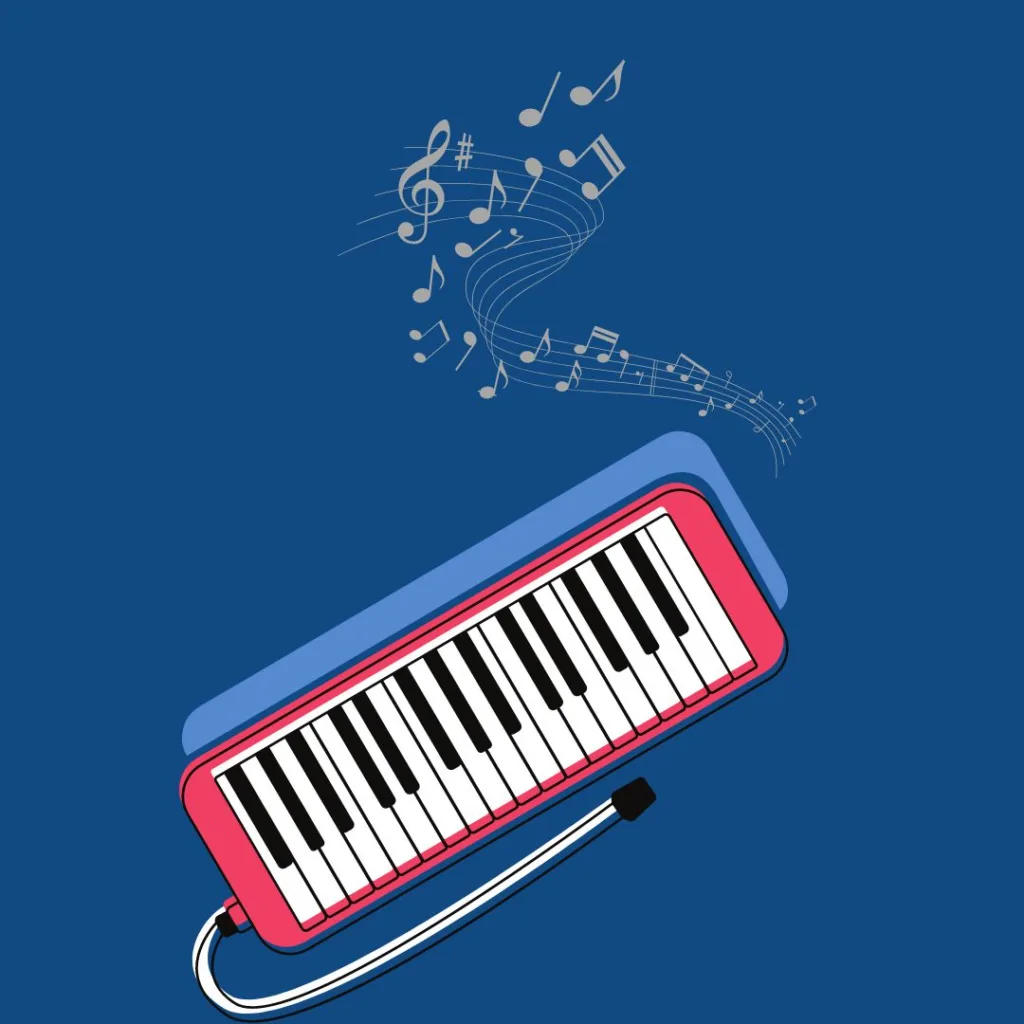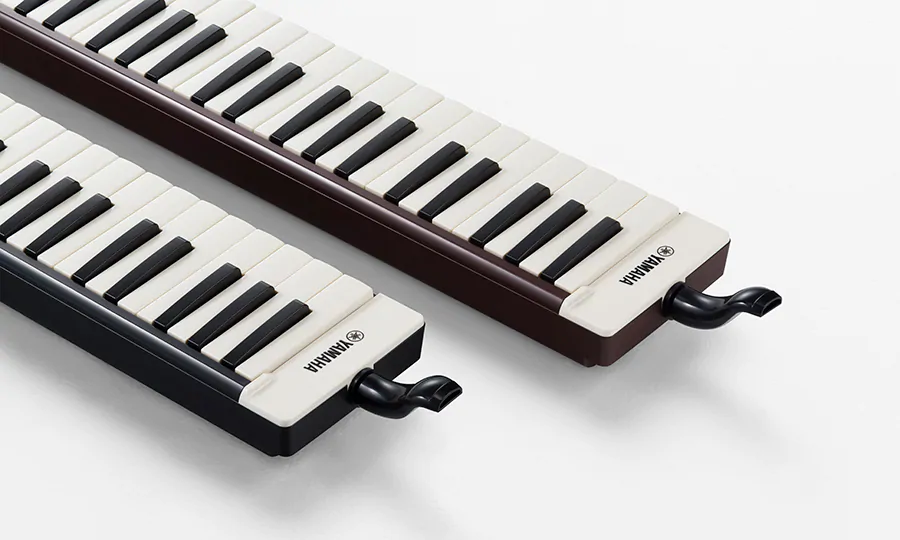
What is Melodica
The melodica is a fun, portable keyboard in the form of a piano that you blow into to produce sound. It resembles a hybrid of a piano accordion and a harmonica (mouth organ). These have been around for almost half a century, after becoming popular as a teaching tool in schools. Reggae musicians, jazz musicians, pop musicians, and even classical composers have since embraced them.
The number of keys of a melodica
There are commonly two keyboard sizes for melodicas:
32 keys, from F3 (the key slightly below middle C on piano) to C6.
37 keys total, from F3 (just below middle C) to F6.

Various other sizes are also available, ranging from 26 keys (or smaller ones!) to 44 keys. Fewer keys reduce the number of tunes the instrument can play. You’re less likely to run out of notes the more keys you have!
When the instrument was invented?
The Hohner Melodica Company in Germany is credited with coining the term “melodica” in 1958. Their original design, the recognisable green Hohner Melodica Soprano, had buttons in place of keys. Since Hohner owns the trademark for the term “melodica,” no other company is technically permitted to use the term for their instruments. The crimson Hohner alto was their second release, also in 1958.
The history of melodica predates the year 1958 by a very long distance. The Harmoniphon is the first melodica-like instrument yet not obsolete. It is a free reed instrument that Paris, Lecrosnier, and Tremblai patented back in 1958. Moreoevr, The instrument is currently on display at the Met Museum in New York. The player would use the keyboard to control the real pitches while blowing into a tube that supplied air to sound the reeds.
Category of Melodica
The instrument’s range serves as the primary criterion for categorising melodicas. Melodicas have slightly varying forms depending on their range.
Soprano and Alto melodicas have higher pitches and a thinner sound than Tenor Melodicas. Some are made to be played simultaneously with both hands; the left hand plays the white keys while the right hand plays the black. Some are performed using a tenor one.
Lower-pitched melodicas are known as tenor melodicas. The right hand operates the keyboard while the left clutches a handle at the bottom. Tenor melodicas are played with using both hands by laying them on a flat surface while inserting a tube into the instrument’s mouthpiece hole.
The Hohner Melodica-Basso (discontinued), the Suzuki B-24 Bass Melodion[12], and the Hammond Bass Melodion BB-24 are examples of bass melodicas.
The Accordina, also known as the “Chromatic Button Melodica,” is often composed of metal and employs the same mechanism and reeds as a conventional melodica. The keyboard is swapped out with a button layout like that of a chromatic button accordion.

What other names do people give the melodica?
It has other names also:
Melodyhorn
Key flute
Vibrandoneon
Pianica
Blow organ
Diamonica
Wind piano
keyboard harmonica
Clavietta
Melodeon
How Should You Maintain the Instrument?
Use the moisture release button to blow out any condensation following each playing session. Overnight, turn the melodica upside down to allow the moisture to drain. When not in use, keep the instrument in its case or some other place that is dust-free. To prevent food crumbs from being stuck in the reeds, avoid eating right before playing, and stay away from sugary beverages while playing.
How is Melodica cleaned?
Cleaning a melodica can make it play more fluidly, get rid of bacteria, and get rid of any bad odours.
Implement these steps for melodicas made of plastic
- Put warm water in a washbasin or plastic tub.
- Including a cup of vinegar
- Put the entire instrument in the water basin.
- To get rid of any internal air, press the keys and the moisture button.
- Submerge the instrument for one hour.
- Pull out the instrument, and while blowing, hit the moisture button. The notes should start playing.
- Overnight, keep the instrument in a warm location while standing on end.
For wooden or vintage melodicas:
- 50ml of vinegar and about a litre of water you should prepare
- Take the melodica’s mouthpiece or tube out.
- A tiny amount of the vinegar solution should be carefully poured through the mouthpiece aperture.
- The melodica should be softly shaken while your thumb is covering the opening.
- Through the mouthpiece opening, remove the solution, and discard it.
- Subsequently, three times.
- While depressing the moisture button, blow into the melodica. The notes should start playing.
- Overnight, keep the instrument in a warm location while standing on end.
Conclusion:
Melodicas will develop and change as they become more widespread. New models and new features have increased gameplay enjoyment. Despite sometimes having a toy-like appearance, melodica is increasingly being used as a serious instrument. It can compete with any more established and conventional instrument when performed with skill.
